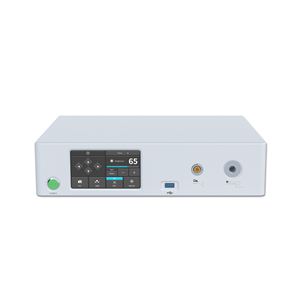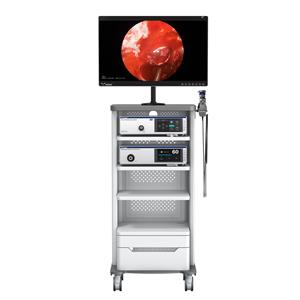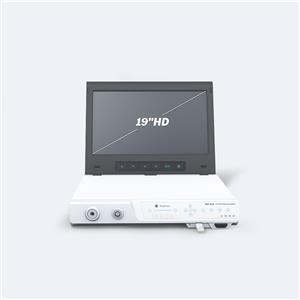Application Of Ear Endoscope In otolaryngology
The ear endoscope can observe the parts that are not easy to observe with the operating microscope, such as the upper thigh chamber and the posterior thigh chamber, so as to find the middle ear disease in time and reduce the recurrence rate of the disease. The advantage lies in non-invasiveness, high resolution of images in the ear, high lighting function, and high diagnosis rate, which enables clinicians to grasp the specific subtle lesions in the ear and provide patients with timely treatment plans.
The application of ear endoscope in otolaryngology:
Since the ear endoscope was used in otology clinics in the 1990s, its advantages such as good exposure, wide field of view, fewer complications, and convenience and ease of operation have been widely recognized, and have been fully applied. Endoscopic tympanic membrane repair, secretory otitis media and other operations are performed. In outpatient clinics with large disease flow, the full and reasonable application of ear endoscopes also provides reliable and convenient diagnosis and treatment tools for the majority of outpatient ear disease patients. It can be used for the diagnosis of diseases of patients with ear canal stenosis, and cerumen embolism, purulent otitis media or external otitis washing treatment, surgical cavity cleaning after middle ear mastoid operation, secretory otitis media tympanic membrane puncture, acute otitis media tympanic incision and drainage, secretory otitis media There are many treatments such as the removal of the tube after the catheterization and the removal of the foreign body in the external auditory canal. Compared with traditional methods of diagnosis and treatment, its biggest advantage is that it fully exposes the field of vision and operates under direct vision, avoiding the blindness of the former, greatly improving the accuracy, and reducing the damage caused by misdiagnosis and improper operation. In terms of complications, the use of ear endoscopes has no major complications, so the use of ear endoscopes is safer and less painful.
Particularly worth mentioning is the role of ear endoscope in the treatment of patients with suppurative otitis media or otitis externa. For patients with ear discharge, whether it is inflammation of the external auditory canal or otitis media, drainage and ventilation are very key treatment measures when the pus accumulates. The ear endoscope is combined with a negative pressure suction device to be used in the treatment of purulent otitis media or external otitis. It can achieve a comprehensive, thorough and clear observation of the lesions in the ear, so as to completely remove the lesions and achieve the purpose of treatment.
For patients with secretory otitis media, ear endoscope is also a good auxiliary diagnosis and treatment tool. It can pass through the narrow external auditory canal to clearly see the tympanic membrane morphology changes and the signs of effusion. At the same time, the tympanic membrane can be routinely punctured and injected under photopic, and the middle ear effusion can be aspirated.
Ear endoscopic surgery method:
The patient is placed in a semi-recumbent side head position, with the affected ear facing up, and 75% alcohol disinfects the external auditory canal. Generally, anesthesia is not required. Pull the auricle backwards with one hand to make the external auditory canal in a straight line, and carefully extend the ear endoscope along the cavity of the ear canal with one hand. Take care not to touch the wall of the external auditory canal as much as possible to avoid damage to the external auditory canal and cause bleeding and pain. Check carefully for congestion and swelling of the skin of the external auditory meatus, whether the tympanic membrane is intact, invaginated, and whether the signs are clear, such as a large perforation of the tympanic membrane. Check whether there is pus in the tympanum and whether the mucous membrane is epithelialized. Patients who stare at embolism can generally be soaked in phenol glycerin for a week to soften it, and then gently aspirate it with a negative pressure suction device under the direct sight of an ear endoscope, or take it out carefully with a cerumen hook. For patients with purulent otitis media or otitis externa flushing treatment, first use a suction device to suck up purulent secretions, and then aspirate 0.5% metronidazole after preheating (37°C) with an empty needle, and then carefully flush into the ears. Suction after flushing. After treatment, there is no need to use any medicine in the ear canal. Treatment is performed every 3 days, and flushing is 2 to 5 times. For patients with secretory otitis media, use a 5 gauge needle to puncture the tympanic membrane before and after the eardrum. The fluid in the tympanic suffocation is drawn out, and α-chymotrypsin and dexamethasone can be injected when necessary. The treatment of acute otitis media with tympanic membrane incision and drainage is suitable for patients with small perforations and poor drainage of pus, as well as severe systemic symptoms and poor therapeutic effect. The specific method is Local surface anesthesia of the tympanic membrane first, or local infiltration anesthesia around the external auditory canal with lidocaine, use a tympanostomy knife to cut the posterior tympanic membrane 2 to 3 mm forward and downward. Do not insert too deep to avoid damage to the promontory mucosa or ossicles, and then exhaust. Pus. The other treatments are also performed under the direct vision of the ear endoscope.
Cleaning and disinfection of ear endoscope:
1. After the operation, rinse the blood stains on the surface of the instrument with running water, open the jaws and gently scrub with a small toothbrush to wash away the blood stains on the shaft joints.
2. The cleaned instruments are soaked in multi-enzyme agent for 2 minutes, then rinsed with running water and wiped dry.
3. The camera endoscope has poor waterproof performance, so it needs to be fumigated and disinfected with formaldehyde gas for 12 hours.




